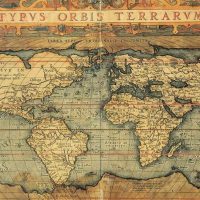Category: Essay Examples
Essay examples are of great value for students who want to complete their assignments timely and efficiently. If you are a student in the university, your first stop in the quest for research paper examples will be the campus library where you can get to view the sample essays of lecturers and other professionals in diverse fields plus those of fellow students who preceded you in the campus.
Browse Essay Examples:
Many college departments maintain libraries of previous student work, including essays, which current students can examine. This collection of free essay examples is our attempt to provide high quality samples of different types of essays on a variety of topics for your study and inspiration.
Ugarit was an ancient harbor city located on the Mediterranean coast of northern Syria. The site is known today as Râs Shamra. Archaeological expeditions began there in 1929, and since that time over 1,250 clay tablets containing cuneiform texts have been discovered. The tablets, dating from the middle …
Ulifilas (Gothic: Wulfila) was a tireless missionary and educator among various Gothic tribes of the Western Roman Empire in the latter half of the fourth century c.e. Not only did he contribute to the culture and education of the “barbarian” tribes before they were integrated into civilized Europe, …
The Sumerian city of Ur is identified with Tell elMuqayyar in southern Iraq, along a course of the Euphrates River that has dried up. It is commonly related to the birthplace of Abraham (“Ur of the Chaldeans” in Genesis 11:28–31). Excavations at Ur began in 1849, but C. …
The Mahavira (Great Hero) Vardhamana was one of the 24 Tirthanakras (Conquerors, or Ford-makers) who were founders of the Indian religious philosophy of Jainism. Vardhamana was born in Ksatriyakundagrama in India in approximately 599 b.c.e. and died in 527 b.c.e. Jainism, or its antecedent, was developed by the …
The Vedas are the oldest sacred writings of all of the world’s major religions. Most scholars believe that the Vedas were transmitted orally for hundreds if not thousands of years before they were committed to writing. When written down, they were recorded in archaic Sanskrit and organized into …
The roughly 1,000 years between 1500–500 b.c.e. is called the Vedic, or Aryan, age. The beginning of the Vedic age corresponded with the end of the Indus civilization (c. 2500–1500 b.c.e.), although it is not clear what precise role the Aryans played in the final fall of the …
Vercingetorix was a tribal chieftain of the Gallic Celtic Arverni tribe who attempted to stop the encroachment of Romans into his territory, Provence, in presentday France, from 53 to 52 b.c.e. The Roman leader, Gaius Julius Caesar (100–44 b.c.e.), and his lieutenant Quintus Atius Labienus (100–45 b.c.e.), lost …
The earliest Visigoths were a Germanic group that alternated between opposing and serving the Roman Empire. Unlike some other Germanic tribes, the Visigoths retained elected leaders, never shifting to a fully hereditary kingship. The early Visigoths, like other Germanic peoples in the late Roman and early post-Roman periods, …
Wang Mang’s fame derived from his failed attempt to establish a dynasty called Xin (Hsin), meaning “new,” between 9 and 23 c.e. when the Han dynasty divided into two parts, the Western, or Former, Han (202 b.c.e.–9 c.e.) and the Eastern, or Later, Han (25–220 c.e.). His rise …
Wei Man came from northern China and lived in the second century b.c.e. He staged an unsuccessful uprising against the newly established Han dynasty in 195 b.c.e. and fled with 1,000 followers to the northern Korean peninsula, where he founded a state called Caoxian (Ch’ao-hsien) in Chinese—the name …
Kings Wen (the Literary or Cultivated) and his son Wu (the Martial) are the founders of the Zhou (Chou) dynasty, c. 1122–256 b.c.e. The Zhou people lived to the west of the Shang in the Wei River valley on the plain of Zhou (hence the dynastic name) in …
Historians of the ancient world have come to recognize that wisdom literature represents the expressions of cultures and civilizations that rely on human experience to cope with life’s mysteries and uncertainties. The genre is pervasive over a wide spectrum of peoples in many ages and places. Wisdom literature …
Xerxes was the oldest son of Darius I, from his first wife, Atossa, daughter of Cyrus II. Xerxes is familiar to students of the Bible since he appears in two books: in the book of Esther he is called by his Hebrew name Ahasuerus; and in the book …
According to Chinese history taught until the early 20th century, culture heroes such as the Divine Farmer and Ox Tamer taught the people the arts of civilization. The Three Emperors (Yao, Shun, and Yu), also mythical, followed the culture heroes, who were venerated because they abdicated in favor …
Xiang Yu was a brilliant general who contributed to the fall of the Qin (Ch’in) dynasty but failed to become the master of China. The unexpected death of the first emperor of the Qin in 210 b.c.e. created a crisis that ended the 10-year-old dynasty. In the ensuing …
Chinese texts describe the Xiongnu, a nomadic people, as ferocious warriors and raiders. Powerful Xiongnu men practiced unlimited polygamy, and when a leader died, his successor married all his father’s or grandfather’s wives except his mother. Likewise a surviving brother took over his deceased brother’s widows. Differences in …
Xunzi means “Master Xun” in Chinese; his personal name was Qing (Ch’ing). He was a heterodox Confucian philosopher, and his collected writings of 32 chapters are named the Xunzi. Each well-argued chapter is devoted to a single topic, such as self-cultivation, proper kingly rule, the recruitment of officials, …
The Yamato court is known as the birthplace of the Japanese political state. It is a term applied to the political system of the Kofun period but also its development and refinement in the late fifth to seventh century’s c.e. The Yamato state unified north Kyushu, Shikoku, and …
In Chinese accounts of the beginning of their civilization, three rulers of exceptional virtue followed the legendary culture heroes Fuxi (Fu-hsi), Shengnong (Shengnung), and the Yellow Emperor; they were Kings Yao, Shun, and Yu. Their shared characteristic was that each rejected his own son as unworthy and tried …
Beginning in Kyushu and spreading eastward toward the north, migrants from mainland Asia introduced Yayoi culture to Japan, especially via the Korean peninsula. The Yayoi culture of Japanese history was evident between the third century b.c.e. and the third century c.e. The population practiced animism, that is, they …


